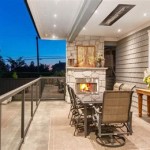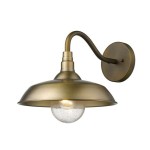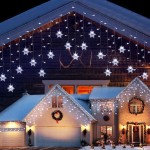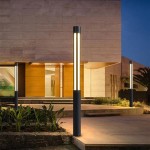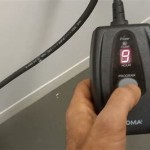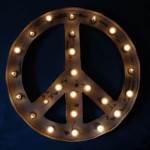Outdoor Waterproof LED Strip Lights: Illumination and Durability Combined
Outdoor waterproof LED strip lights represent a versatile and energy-efficient solution for illuminating exterior spaces. These lights offer a combination of aesthetic appeal and robust construction, designed to withstand the rigors of outdoor environments. Their adaptability makes them suitable for a wide range of applications, from architectural accents to landscape lighting and safety enhancements.
The primary advantage of LED strip lights lies in their flexibility. They can be easily cut to size and shaped to fit various surfaces, allowing for creative and customized lighting designs. This adaptability, coupled with their low energy consumption and long lifespan, makes them a cost-effective and sustainable lighting option for outdoor use.
The "waterproof" aspect of these LED strips is crucial for their outdoor performance. This characteristic is achieved through various protective measures, such as encasing the LEDs and circuitry in silicone or epoxy resin, as well as utilizing waterproof connectors and power supplies. This ensures that the lights can function reliably even in wet or humid conditions, preventing damage from rain, snow, and other sources of moisture.
Understanding Waterproof Ratings: IP Codes
A critical aspect when selecting outdoor waterproof LED strip lights is understanding the Ingress Protection (IP) rating. The IP code is an international standard (IEC 60529) that classifies the degree of protection provided by electrical enclosures against intrusion of solid objects (like dust) and liquids (like water). The IP code consists of two digits; the first digit indicates the protection against solid objects, and the second digit indicates the protection against liquids.
For outdoor applications, an IP rating of IP65 or higher is typically recommended. IP65 signifies that the enclosure is protected against dust and water jets from any direction. IP67 provides protection against temporary immersion in water, and IP68 offers protection against continuous immersion in water. The specific IP rating required will depend on the intended application and the level of exposure to water. For instance, LED strips installed in a garden setting might only require IP65, while those submerged in a fountain would need IP68.
It is important to note that "water-resistant" is not the same as "waterproof." Water-resistant implies a limited ability to withstand water exposure, while waterproof indicates a more comprehensive protection against water damage. When choosing LED strip lights for outdoor use, it is imperative to confirm that they are explicitly labeled as "waterproof" and possess an appropriate IP rating for the intended environment.
The IP rating is crucial because water ingress can cause several problems. It can lead to short circuits, corrosion of the electrical components, and ultimately, failure of the LED strip. Therefore, selecting a product with the correct IP rating is an investment in the longevity and reliability of the outdoor lighting system.
Key Features to Consider When Choosing Outdoor Waterproof LED Strip Lights
Beyond the IP rating, several other factors should be considered when selecting outdoor waterproof LED strip lights to ensure optimal performance and suitability for the intended application. These features include LED type, brightness, color temperature, voltage, power consumption, and installation method.
LED Type: Various types of LEDs are used in strip lights, each offering different brightness, color rendering, and energy efficiency. Common types include SMD (Surface Mount Device) LEDs such as SMD3528, SMD5050, and SMD2835. SMD5050 LEDs are generally brighter than SMD3528 due to their larger size and three LEDs per chip, while SMD2835 offers a good balance of brightness and energy efficiency. The choice of LED type will depend on the desired level of illumination and energy consumption.
Brightness: The brightness of LED strip lights is measured in lumens per meter. The required brightness will depend on the application. For accent lighting, lower lumen output may be sufficient, while task lighting or area illumination will require higher lumen output. It is important to consider the distance between the light source and the illuminated surface when determining the necessary brightness.
Color Temperature: Color temperature is measured in Kelvin (K) and describes the perceived warmth or coolness of the light. Lower color temperatures (e.g., 2700K-3000K) produce a warm, yellowish light, while higher color temperatures (e.g., 5000K-6500K) produce a cool, bluish-white light. The choice of color temperature will depend on the desired ambiance and the aesthetics of the surrounding environment. Warm white light is often preferred for creating a cozy and inviting atmosphere, while cool white light is suitable for areas requiring bright and focused illumination.
Voltage: LED strip lights typically operate on 12V or 24V DC power. 12V systems are generally easier to install and require less specialized wiring, while 24V systems offer better performance over longer distances, reducing voltage drop and ensuring consistent brightness. The choice of voltage will depend on the length of the LED strip and the complexity of the wiring system.
Power Consumption: The power consumption of LED strip lights is measured in watts per meter. Lower power consumption translates to lower energy costs and reduced environmental impact. When comparing different LED strip lights, it is important to consider both the brightness and the power consumption to determine the overall energy efficiency.
Installation Method: LED strip lights are typically installed using adhesive backing, mounting clips, or channels. Adhesive backing provides a quick and easy installation method for flat surfaces, while mounting clips and channels offer a more secure and durable installation, particularly for uneven or curved surfaces. The choice of installation method will depend on the surface type and the desired level of permanence.
Applications of Outdoor Waterproof LED Strip Lights
The versatility of outdoor waterproof LED strip lights makes them suitable for a wide range of applications. Here are some common examples:
Architectural Lighting: LED strip lights can be used to highlight architectural features, such as rooflines, columns, and windows. They can create dramatic effects and enhance the aesthetic appeal of buildings.
Landscape Lighting: LED strip lights are ideal for illuminating gardens, pathways, and patios. They can be used to create ambient lighting, highlight plants and trees, and improve safety by providing illumination in dark areas.
Deck and Patio Lighting: LED strip lights can be installed under railings, steps, and benches to create a warm and inviting atmosphere on decks and patios. They can also be used to illuminate outdoor kitchens and dining areas.
Pool and Spa Lighting: With appropriate IP ratings (IP68), LED strip lights can be used to illuminate swimming pools and spas. They can enhance the visual appeal of these features and create a relaxing and inviting environment. It is crucial to use low voltage DC setups with proper grounding for safety in aquatic environments.
Signage and Advertising: LED strip lights can be used to create illuminated signage and advertising displays. They are energy-efficient and offer a long lifespan, making them a cost-effective option for businesses.
Vehicle Lighting: LED strip lights can be used for accent lighting on cars, trucks, and boats. They can enhance the appearance of vehicles and improve visibility at night.
Holiday Lighting: LED strip lights are a popular choice for holiday decorations. They can be used to decorate homes, trees, and other outdoor features. Their energy efficiency and long lifespan make them a cost-effective option for seasonal lighting.
Proper installation and maintenance are crucial for ensuring the longevity and performance of outdoor waterproof LED strip lights. It is important to follow the manufacturer's instructions carefully and to use appropriate wiring and connectors. Regular cleaning and inspection can help to prevent problems and extend the lifespan of the lights. By carefully selecting the appropriate type of LED strip lights and following proper installation and maintenance procedures, users can enjoy the benefits of these versatile and energy-efficient lighting solutions for years to come.
Ap3016 3cm Width Silicone Outdoor Waterproof Ip67 Led Strip Light China Silione Tube Profile Made In Com

Rgb White Ip67 Outdoor Led Light Strips

12v 24v Ip67 Silicone Tube Waterproof Cob Outdoor Led Strips

The Complete Guide To Outdoor Led Strip Lights Lighting Access

Modern Black Outdoor Waterproof Aluminum Long Led Strip Wall Lamp For Porch Mirodemi

Ac 110v 220v High Voltage Outdoor Rgb Led Strip 10m 100m

12 Best Outdoor Waterproof Led Strip Lights For Your Use Electronicshub

Waterproof Led Strip Lights 32 8ft 10m 300 Leds Color Changing With 44 Keys Ir Remote Controller And 12v Power Supply For Indoor Outdoor Com

Outdoor Led Strip Lights Technologies

12v 24v Ip67 Silicone Tube Waterproof Cob Outdoor Led Strips

